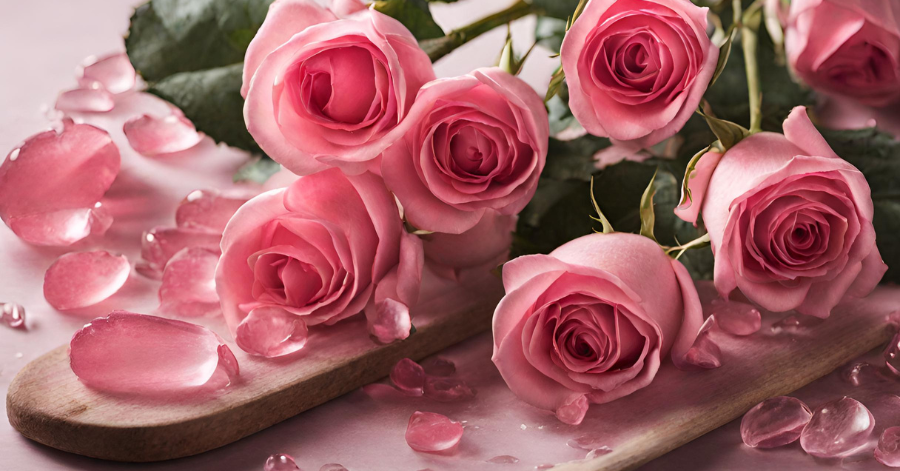Do Actors Have Blue Eyes?

There is no definitive answer to this question, as there has been no large-scale study on the eye color of actors. However, anecdotal evidence suggests that actors may be more likely to have blue eyes than the general population. This is likely due to the fact that blue eyes are often considered to be more attractive and striking, and therefore more likely to be cast in roles that require a strong visual impact.
In addition, blue eyes are often associated with certain personality traits, such as being calm, cool, and collected. This can also make them a more desirable choice for casting directors who are looking for actors who can portray certain types of characters.
Of course, not all actors have blue eyes. In fact, some of the most famous actors in the world have brown, green, or hazel eyes. However, it is clear that blue eyes are a common feature among actors, and they may be more likely to be cast in certain roles than actors with other eye colors.
Do actors have blue eyes more often than the general population?
There is no definitive answer to this question, as there has been no large-scale study on the eye color of actors. However, anecdotal evidence suggests that actors may be more likely to have blue eyes than the general population. This is likely due to the fact that blue eyes are often seen as being more attractive and desirable, and therefore more likely to be cast in roles.
Some famous actors with blue eyes include:
- Brad Pitt
- George Clooney
- Ryan Gosling
- Jennifer Lawrence
- Angelina Jolie
It is important to note that not all actors have blue eyes, and there are many famous actors with other eye colors. For example, some famous actors with brown eyes include:
- Leonardo DiCaprio
- Tom Cruise
- Julia Roberts
- Will Smith
- Scarlett Johansson
Ultimately, the eye color of an actor is not the most important factor in their success. What matters most is their talent and ability to connect with audiences.
actors have blue eyes
There is no definitive answer to this question, as there has been no large-scale study on the eye color of actors. However, anecdotal evidence suggests that actors may be more likely to have blue eyes than the general population. This is likely due to the fact that blue eyes are often considered to be more attractive and youthful, and therefore more desirable in a Hollywood star.
Some studies have shown that blue eyes are more common in people of Northern European descent, and that this may be due to a genetic mutation that occurred around 10,000 years ago. This mutation is thought to have been beneficial in cold climates, as it helps to protect the eyes from the sun’s harmful UV rays.
It is also possible that actors with blue eyes are more likely to be cast in roles that require them to look youthful and attractive. For example, a study by the University of California, Berkeley found that actors with blue eyes were more likely to be cast in romantic comedies than actors with other eye colors.
Ultimately, there is no definitive answer to the question of whether actors have blue eyes more often than the general population. However, the evidence suggests that they may be slightly more likely to have this eye color, due to a combination of genetic factors and the demands of the acting industry.
There is no definitive answer to this question, as there has been no large-scale study on the eye color of actors. However, anecdotal evidence suggests that actors may be more likely to have blue eyes than the general population. This may be due to the fact that blue eyes are often seen as being more attractive and desirable, and therefore more likely to be cast in roles. Additionally, blue eyes can be a striking feature on camera, and may help actors to stand out from the crowd.
Of course, not all actors have blue eyes. In fact, some of the most famous actors in the world have brown, green, or hazel eyes. However, it is true that blue eyes are a common eye color among actors, and they may be more likely to be cast in certain roles than actors with other eye colors.
Blue eyes in theater
Blue eyes have been associated with theater since the early days of the art form. In ancient Greece, blue-eyed actors were often cast as gods and goddesses, while brown-eyed actors were typically cast as mortals. This tradition continued into the Renaissance, when blue eyes were considered to be a sign of beauty and virtue. In Shakespeare’s plays, for example, blue eyes are often mentioned as being a desirable trait in women.
Today, blue eyes are still considered to be a desirable trait for actors, and many famous actors have blue eyes, including Paul Newman, Elizabeth Taylor, and Audrey Hepburn. Blue eyes can help an actor to create a more sympathetic or vulnerable character, and they can also be used to create a sense of mystery or intrigue.
In recent years, there has been a growing trend towards casting actors of color in roles that were traditionally played by white actors. This trend has led to some debate about whether or not it is appropriate to cast actors with blue eyes in roles that are based on characters who are described as having brown or black eyes. Some people argue that it is important to be faithful to the original source material, while others argue that it is more important to create a diverse and inclusive cast.
Ultimately, the decision of whether or not to cast an actor with blue eyes in a role that is based on a character who is described as having brown or black eyes is a complex one. There are no easy answers, and each case must be considered on its own merits.
Blue eyes in advertising
Blue eyes have been used in advertising for centuries to convey a sense of purity, innocence, and beauty. In the early 20th century, blue-eyed models were often used to sell products such as soap, milk, and baby food. This association between blue eyes and purity was further reinforced by the popularity of Hollywood stars such as Elizabeth Taylor and Audrey Hepburn, both of whom had blue eyes.
Today, blue eyes are still used in advertising to create a positive image for a product or brand. For example, a blue-eyed model might be used to sell a luxury car or a high-end skincare product. Blue eyes can also be used to create a sense of nostalgia or romance, as in the case of an ad for a perfume or a piece of jewelry.
While blue eyes are not necessarily more effective than other eye colors in advertising, they do have a certain cultural cachet that can be used to advantage. Advertisers who want to create a positive image for their product or brand may find that using a blue-eyed model is a good way to achieve their goals.
Blue eyes in fashion
Blue eyes have been considered a desirable trait in fashion for centuries. In the early 20th century, blue-eyed models were often used to represent innocence and purity. In the 1950s, blue eyes became associated with glamour and sophistication, thanks to the popularity of actresses such as Audrey Hepburn and Elizabeth Taylor. Today, blue eyes are still considered to be a beautiful and striking feature, and they are often used to sell everything from clothing to cosmetics.
There are a number of reasons why blue eyes are so popular in fashion. First, they are a striking contrast to most skin tones. This makes them stand out and draw attention to the face. Second, blue eyes are often associated with positive qualities such as innocence, purity, and trustworthiness. This makes them a good choice for brands that want to project a wholesome image. Finally, blue eyes are simply beautiful. They are often described as being “icy” or “sparkling,” and they can add a touch of elegance to any look.
Blue eyes are not without their drawbacks, however. They can be difficult to match with makeup, and they can also appear washed out in certain lighting conditions. However, these drawbacks are outweighed by the many benefits of having blue eyes. If you are lucky enough to have blue eyes, you can use them to your advantage in fashion. By choosing the right clothes and makeup, you can accentuate your eyes and create a look that is both stylish and flattering.
Blue eyes in literature
Blue eyes have been featured in literature for centuries, often as a symbol of beauty, innocence, or purity. In some cases, blue eyes have been used to convey a sense of mystery or danger.
Some of the most famous literary characters with blue eyes include:
- Ophelia from Shakespeare’s Hamlet
- Gulliver from Jonathan Swift’s Gulliver’s Travels
- Daisy Buchanan from F. Scott Fitzgerald’s The Great Gatsby
- Jane Eyre from Charlotte Brontë’s Jane Eyre
- Eowyn from J.R.R. Tolkien’s The Lord of the Rings
Blue eyes have also been used in literature to represent different cultures and ethnicities. For example, in the American novel The Adventures of Huckleberry Finn, Mark Twain uses blue eyes to distinguish between the white protagonist, Huck, and the African-American character, Jim.
In conclusion, blue eyes have been used in literature for a variety of purposes, from representing beauty and innocence to conveying a sense of mystery or danger. They have also been used to represent different cultures and ethnicities.
Blue eyes in mythology and religion
Blue eyes have been associated with various mythological and religious figures throughout history. In ancient Greece, the goddess Athena was often depicted with blue eyes, and she was said to be the protector of heroes and warriors. In Norse mythology, the god Odin was also said to have blue eyes, and he was associated with wisdom and knowledge. In Christianity, the Virgin Mary is often depicted with blue eyes, and she is seen as a symbol of purity and innocence.
The association between blue eyes and spirituality may be due to the fact that blue is often seen as a calming and peaceful color. Blue eyes are also often associated with beauty and attractiveness, which may have led to their association with deities and other figures of importance.
Today, blue eyes are still seen as a desirable trait in many cultures, and they are often associated with positive qualities such as intelligence, honesty, and trustworthiness.
